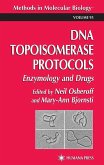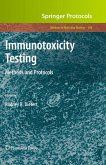The field of DNA vaccines has undergone explosive growth in the last few years. As usual, some historical precursors of this approach can be d- cerned in the scientific literature of the last decades. However, the present state of affairs appears to date from observations made discreetly in 1988 by Wolff, Malone, Felgner, and colleagues, which were described in a 1989 patent and published in 1990. Quite surprisingly, they showed that genes carried by pure plasmid DNA and injected in a saline solution, hence the epithet "naked DNA," could be taken up and expressed by skeletal muscle cells with a low but reproducible frequency. Such a simple methodology was sure to spawn many applications. In a separate and important line of experimentation, Tang, De Vit, and Johnston announced in 1992 that it was indeed possible to obtain humoral immune responses against proteins encoded by DNA delivered to the skin by a biolistic device, which has colloquially become known as the "gene gun. " Theyear 1993 saw the publication of further improvements in the me- ods of naked DNA delivery and, above all, the first demonstrations by several groups of the induction of humoral and cytotoxic immune responses to viral antigens expressed from injected plasmid DNA. In some cases, protection against challenge with the pathogen was obtained. The latter result was - questionably the touchstone of a method of vaccination worthy of the name.
Hinweis: Dieser Artikel kann nur an eine deutsche Lieferadresse ausgeliefert werden.
Hinweis: Dieser Artikel kann nur an eine deutsche Lieferadresse ausgeliefert werden.
"...does an excellent job of describing the current methodologies in their development, what clinical benefit can be expected, and what is known of their mode of action...has thoroughly covered the current state of the art." -Antiviral Research
"The present book contains 41 chapters by experts in the field not only describing the state-of-the-art thinking on each topic, but, more importantly, providing a step-by-step recipe for constructing the cost effective plasmids and measuring host immune responses, both humoral and cellular, as well as all the stops in between including delivery, etc....an excellent roadmap as to how to proceed...This comprehensive collection of chapters is the first of its kind in the rapidly moving field to provide an excellent update of all of the recent advances and, more importantly, the actual technical approaches to developing vaccines. This is a book that should be in everyone's library who is interested in pursing studies employing DNA immunization and for graduate students interested in an up-to-date understanding of DNA vaccination." -FEBS Letters
"Its 41 chapters provide a valuable introduction, a series of working protocols, and a set of heavily referenced reviews of state-of-the-art methods in the production, use, and analysis of DNA vaccines. The various chapters are especially fruitful in their presentation of detailed techniques for making buffers and complex biological reagents." -Modern Drug Discovery
"Tecular Biology series, consists of 41 well written and referenced chapters dealing with certain aspects of DNA vaccination. The subjects addressed range from large scale plasmid isolation to DNA vaccination and autoimmunity, and illuminate the explosive growth this field has undergone in recent years. A substantial amount of the text concentrates on the practical aspects of processing DNA, quality control and immunological responses....In short, this book is a valuable addition to the library of all people actively involved in the field of DNA vaccination. Researchers will find the detailed protocols and innumerable reference valuable. I would recommend this book to any researcher in this field, if only to finally have a book with well organized and referenced protocols instead of a pile of coffee stained photocopies." -Today's Life Science
"The scope of the text is wide and covers virtually all aspects of the subject from the initial plasmid preparation and industrial scale up to the regulatory issues that will probably need to be addressed if such vaccines reach licensing stage." - The Journal of Medical Microbiology
"Work on the development of DNA vaccines continues aspace for a huge range of potential applications and this book will be invaluable for any laboratory involved in research in this field." -Microbiology Today
"The present book contains 41 chapters by experts in the field not only describing the state-of-the-art thinking on each topic, but, more importantly, providing a step-by-step recipe for constructing the cost effective plasmids and measuring host immune responses, both humoral and cellular, as well as all the stops in between including delivery, etc....an excellent roadmap as to how to proceed...This comprehensive collection of chapters is the first of its kind in the rapidly moving field to provide an excellent update of all of the recent advances and, more importantly, the actual technical approaches to developing vaccines. This is a book that should be in everyone's library who is interested in pursing studies employing DNA immunization and for graduate students interested in an up-to-date understanding of DNA vaccination." -FEBS Letters
"Its 41 chapters provide a valuable introduction, a series of working protocols, and a set of heavily referenced reviews of state-of-the-art methods in the production, use, and analysis of DNA vaccines. The various chapters are especially fruitful in their presentation of detailed techniques for making buffers and complex biological reagents." -Modern Drug Discovery
"Tecular Biology series, consists of 41 well written and referenced chapters dealing with certain aspects of DNA vaccination. The subjects addressed range from large scale plasmid isolation to DNA vaccination and autoimmunity, and illuminate the explosive growth this field has undergone in recent years. A substantial amount of the text concentrates on the practical aspects of processing DNA, quality control and immunological responses....In short, this book is a valuable addition to the library of all people actively involved in the field of DNA vaccination. Researchers will find the detailed protocols and innumerable reference valuable. I would recommend this book to any researcher in this field, if only to finally have a book with well organized and referenced protocols instead of a pile of coffee stained photocopies." -Today's Life Science
"The scope of the text is wide and covers virtually all aspects of the subject from the initial plasmid preparation and industrial scale up to the regulatory issues that will probably need to be addressed if such vaccines reach licensing stage." - The Journal of Medical Microbiology
"Work on the development of DNA vaccines continues aspace for a huge range of potential applications and this book will be invaluable for any laboratory involved in research in this field." -Microbiology Today








